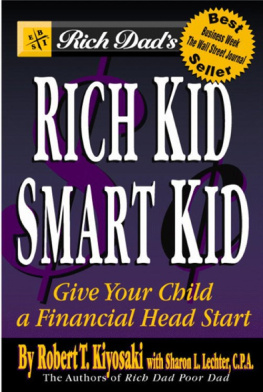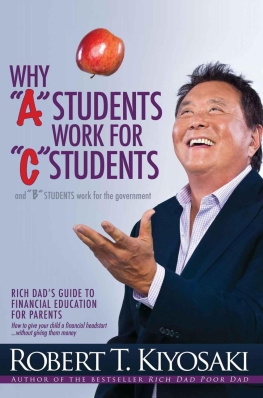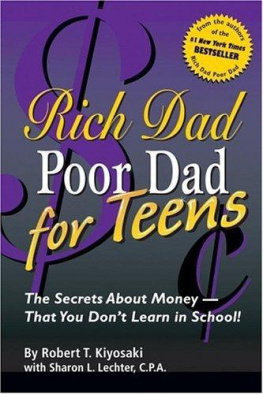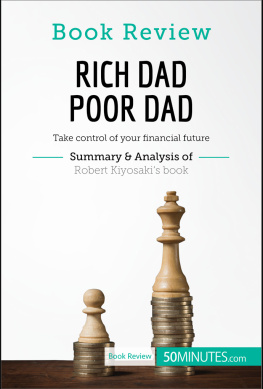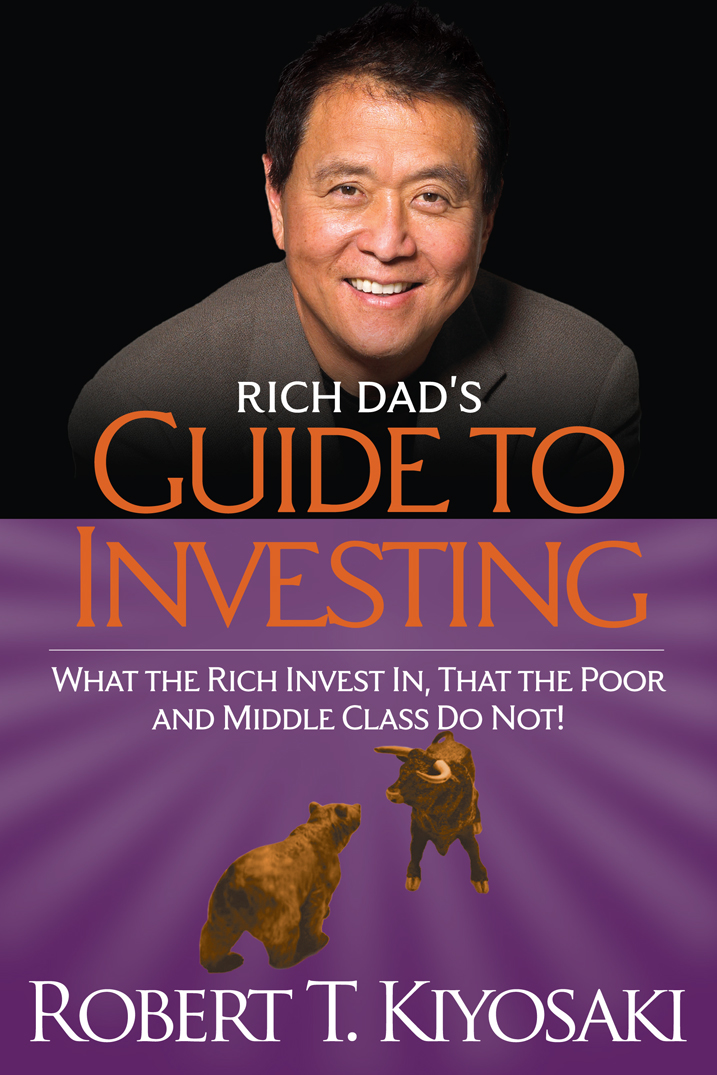

If you purchase this book without a cover, or purchase a PDF, jpg, or tiff copy of this book, it is likely stolen property or a counterfeit. In that case, neither the authors, the publisher, nor any of their employees or agents has received any payment for the copy. Furthermore, counterfeiting is a known avenue of financial support for organized crime and terrorist groups. We urge you to please not purchase any such copy and to report any instance of someone selling such copies to Plata Publishing LLC.
This publication is designed to provide competent and reliable information regarding the subject matter covered. However, it is sold with the understanding that the author and publisher are not engaged in rendering legal, financial, or other professional advice. Laws and practices often vary from state to state and country to country and if legal or other expert assistance is required, the services of a professional should be sought. The author and publisher specifically disclaim any liability that is incurred from the use or application of the contents of this book.
Copyright 2012 by CASHFLOW Technologies, Inc. All rights reserved. Except as permitted under the U.S. Copyright Act of 1976, no part of this publication may be reproduced, distributed, or transmitted in any form or by any means or stored in a database or retrieval system, without the prior written permission of the publisher.
Published by Plata Publishing, LLC
CASHFLOW, Rich Dad, Rich Dad Advisors, and ESBI are registered trademarks of CASHFLOW Technologies, Inc.

| are registered trademarks of CASHFLOW Technologies, Inc. |
Plata Publishing, LLC
4330 N. Civic Center Plaza
Suite 100
Scottsdale, AZ 85251
(480) 998-6971
Visit our websites: PlataPublishing.com and RichDad.com
062014
First Edition: 1998
First Plata Publishing Edition: January 2012
ISBN: 978-1-61268-022-4


A Fathers Advice on Investing
Years ago, I asked my rich dad, What advice would you give to the average investor?
His reply was, Dont be average.


The 90 / 10 Rule of Money
Most of us have heard of the 80/20 rule. In other words, 80% of our success comes from 20% of our efforts. Originated by the Italian economist Vilfredo Pareto in 1897, it is also known as The Principle of Least Effort.
Rich dad agreed with the 80/20 rule for overall success in all areas but money. When it came to money, he believed in the 90/10 rule.
Rich dad noticed that 10% of the people had 90% of the money. He pointed out that in the world of movies, 10% of the actors made 90% of the money. He also noticed that 10% of the athletes made 90% of the money as did 10% of the musicians.
The same 90/10 rule applies to the world of investing, which is why his advice to investors was, Dont be average.
An article in The Wall Street Journal recently validated his opinion. It stated that 90% of all corporate shares of stock in America are owned by just 10% of the people.
This book explains how some of the investors in the 10% have gained 90% of the wealth and how you might be able to do the same.


Acknowledgments
On April 8, 1997, Rich Dad Poor Dad was published. We printed 1,000 copies, thinking that that quantity would last us for at least a year.
Tens of millions of copies later, with very little spent on traditional advertising, the success of Rich Dad Poor Dad and Rich Dads CASHFLOW Quadrant continues to amaze us. Sales have been driven primarily by word of mouth, the best kind of marketing.
Rich Dads Guide to Investing is a thank you for helping to make
Rich Dad Poor Dad and Rich Dads CASHFLOW Quadrant so successful.
We have made many new friends through this success and some of them have contributed to the development of this book. We would like to personally thank you for your contribution.
We especially want to thank the incredible team members we have at The Rich Dad Company.
Robert and Kim Kiyosaki

CONTENTS
Guide
CONTENTS

The Securities and Exchange Commission (SEC) of the United States defines an individual as an accredited investor if the individual has:
$200,000 or more in annual income, or
$300,000 or more in annual income as a couple, or
$1 million or more in net worth.
The SEC established these requirements to protect the average investor from some of the worst and most risky investments in the world. The problem is that these investor requirements also shield the average investor from some of the best investments in the world, which is one reason why rich dads advice to the average investor was, Dont be average.
Starting with Nothing
This book begins with my return from Vietnam in 1973. I had less than a year to go before I was going to be discharged from the Marine Corps. That meant that in less than a year I was going to have no job, no money, and no assets. So this book begins at a point that many of you may recognize, and that is a point of starting with nothing.
All I had in 1973 was the dream of someday being very rich and becoming an investor who could qualify to invest in the investments of the rich. These are investments that few people ever hear about, that are not written about in the financial newspapers, and are not sold over the counter by investment brokers. This book begins when I had nothing but a dream and my rich dads guidance to become an investor.
This book should be of interest to you whether you have very little money to invest or have a lot to invest, whether you know very little about investing or you know a lot about investing. It is about a very complex subject but written as simply as possible. It is written for anyone interested in becoming a better-informed investor, regardless of how much money they have.
If this is your first book on investing, and you are concerned that it might be too complicated, please do not be concerned. All I ask is that you have a willingness to learn and read this book from the beginning to the end with an open mind. If there are parts of the book that you do not understand, then just read the words and continue on to the end. Even if you do not understand everything, you will know more about the subject of investing than many people who are currently investing in the market just by reading all the way through to the conclusion. In fact, by reading the entire book, you will know a lot more about investing than many people who are being paid to give their investment advice. This book begins with the simple and goes into the sophisticated without getting too bogged down in detail and complexity. In many ways, this book starts simple and remains simple, although it covers some very sophisticated investor strategies. This is a story of a rich man guiding a young man, with pictures and diagrams to help explain the often-confusing subject of investing.
Next page

